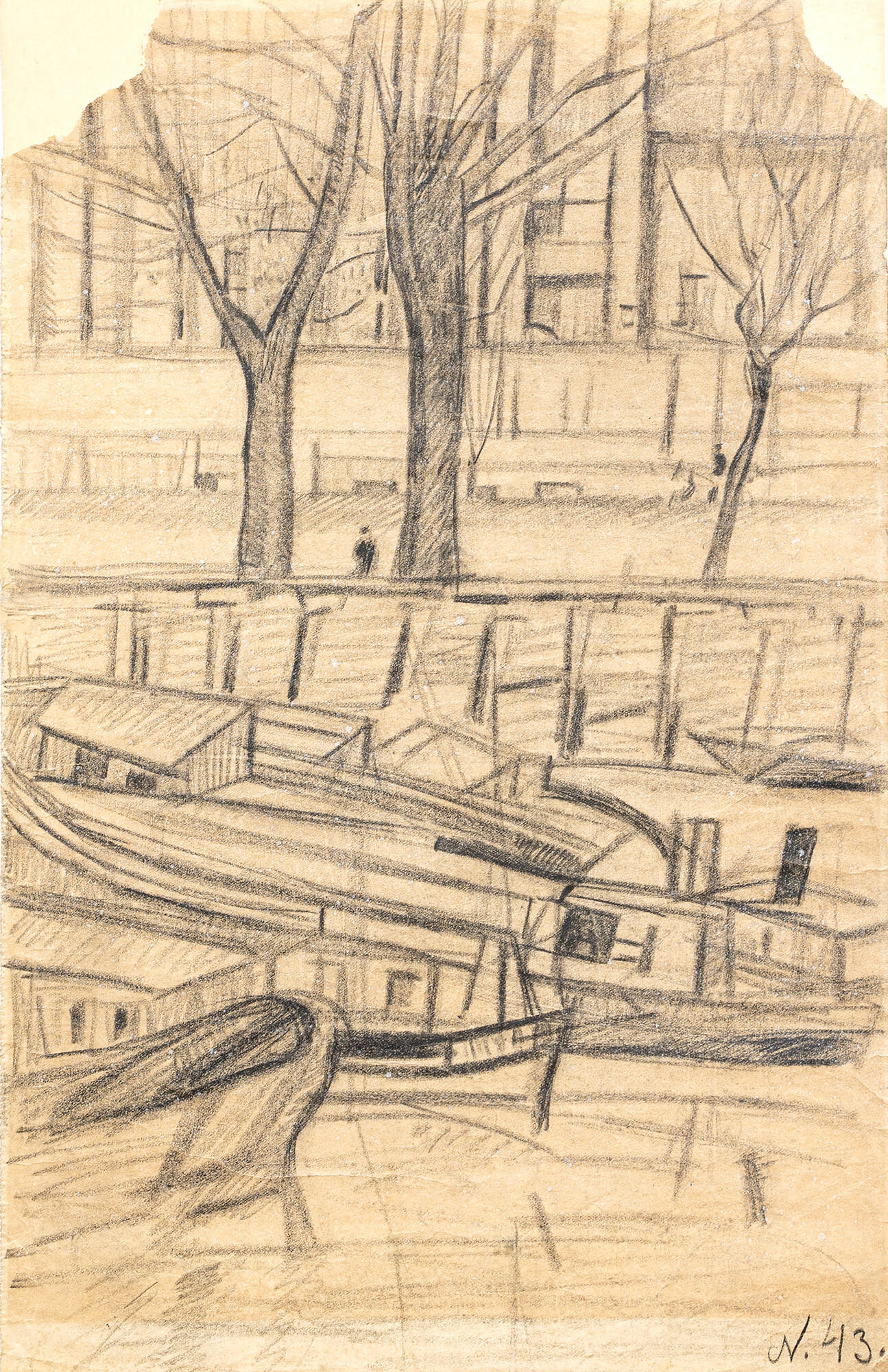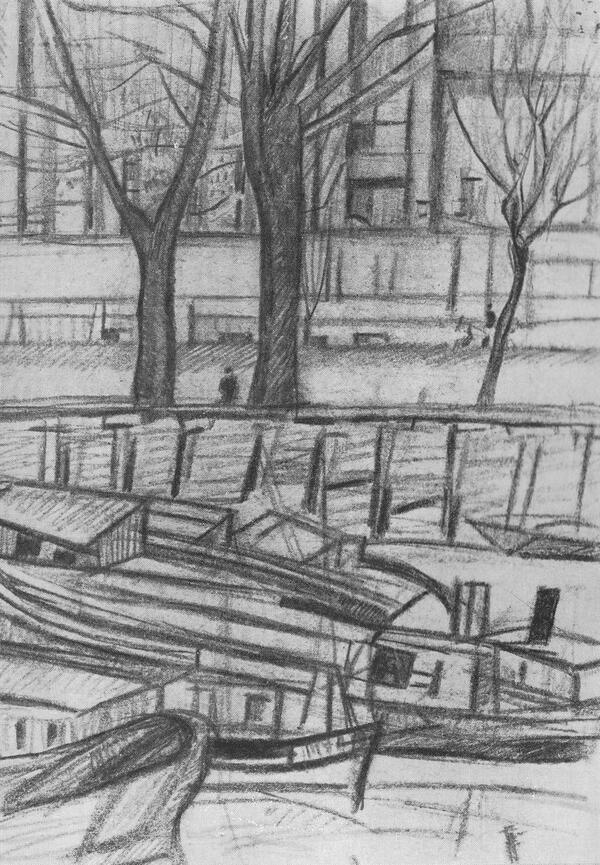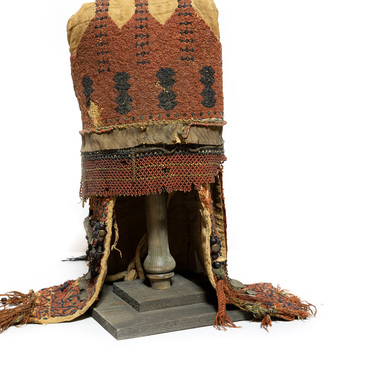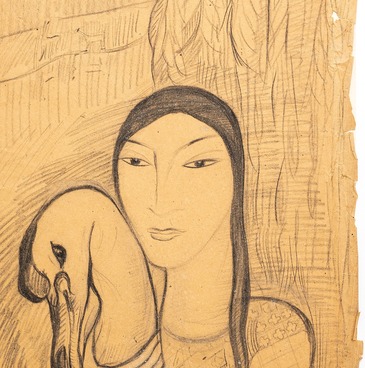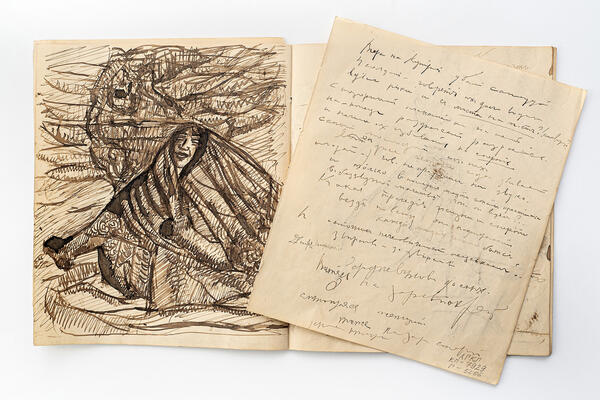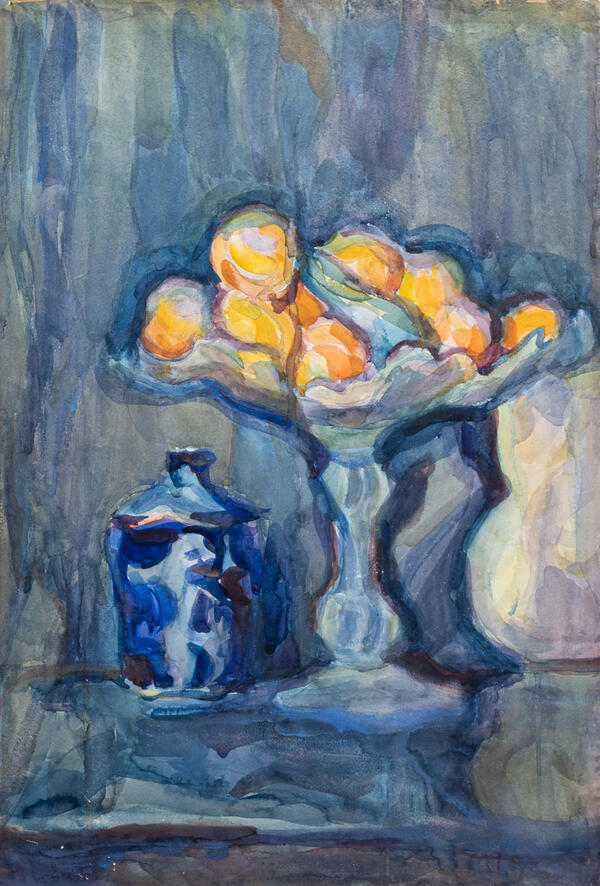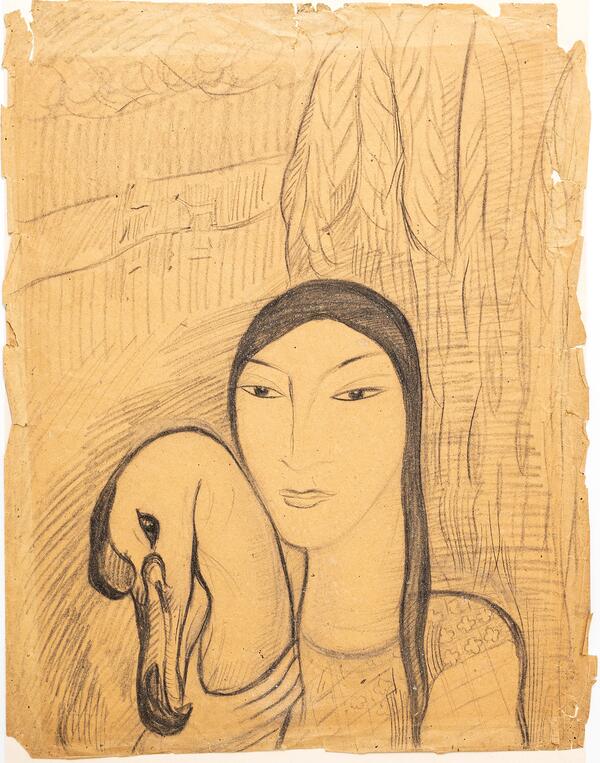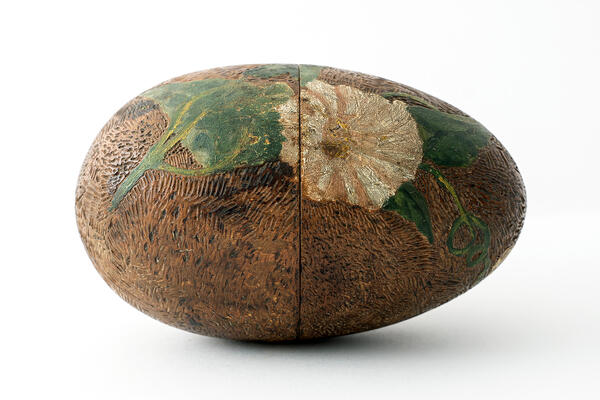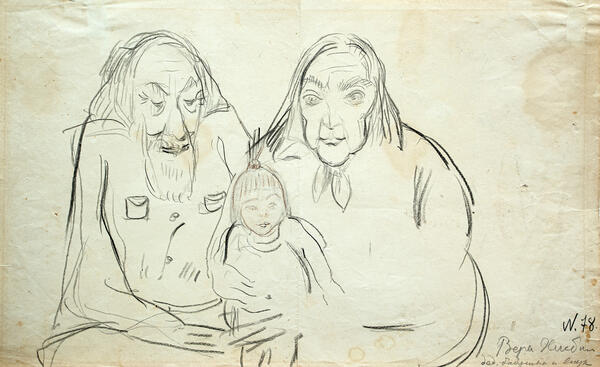Vera Khlebnikova returned from Italy to her homeland on the eve of the revolutionary coups, but did not abandon her artistic work. Astrakhan was in the center of military events, and she could not obtain paper, canvas and paint. The artist turned to graphics; in this technique she created a series of works dedicated to Astrakhan. Using soft black chalk, Vera Vladimirovna managed to convey the atmosphere of a gloomy wintery city, where the colors merge into a single grayish-black palette.
In a letter to her husband Pyotr Vasilyevich Miturich, Vera wrote with regret that the cold windy weather did not allow her to work en plein air, although “one could draw” at the river. Once a small river, Kutum, an arm of the Volga, was a kind of symbol of river bazaars: red fish, caviar, watermelons, famous “Cherepakha” apples were sold on boats — there were 800 gardens in the villages of Cherepakha and Nachalovo. The river itself got its name from the kutum fish (Caspian white fish) that was once common there.
The drawing made in 1919 shows empty merchant boats huddled at the pier. These are wooden sailless barges and rowboats, which were the most popular among Astrakhan merchants. Only these boats were allowed on Kutum: there were five bridges on the river and not every vessel could pass under them.
Bare trees and buildings are behind the fence of the city embankment; everything conveys the desolation that reigned in Astrakhan during the revolution.
Kutum was captured not only by Vera Khlebnikova, but also by Pyotr Miturich. As Maria Chegodaeva notes, his style is characterized by restraint, rigor and amazing accuracy of strokes, “sometimes silvery translucent, and then very dense, almost black”, as well as “calm objectivity”. A verbal description of the river is also given in Velimir Khlebnikov’s story “Yesir”.
The Velimir Khlebnikov House Museum offers visitors to tour Vera’s rooms, where the artist lived in 1916–1924. Her artist’s case, Japanese gouache and other personal belongings, including the watercolors she made in childhood and youth beloved by Velimir are also kept there. The walls are decorated with selected drawings: “Orpheus in the Garden”, “Young Woman with a Swan” and “The Kutum Embankment” made at the request of her brother.